Kindergarten and First Grade Tour
Digging Through Time
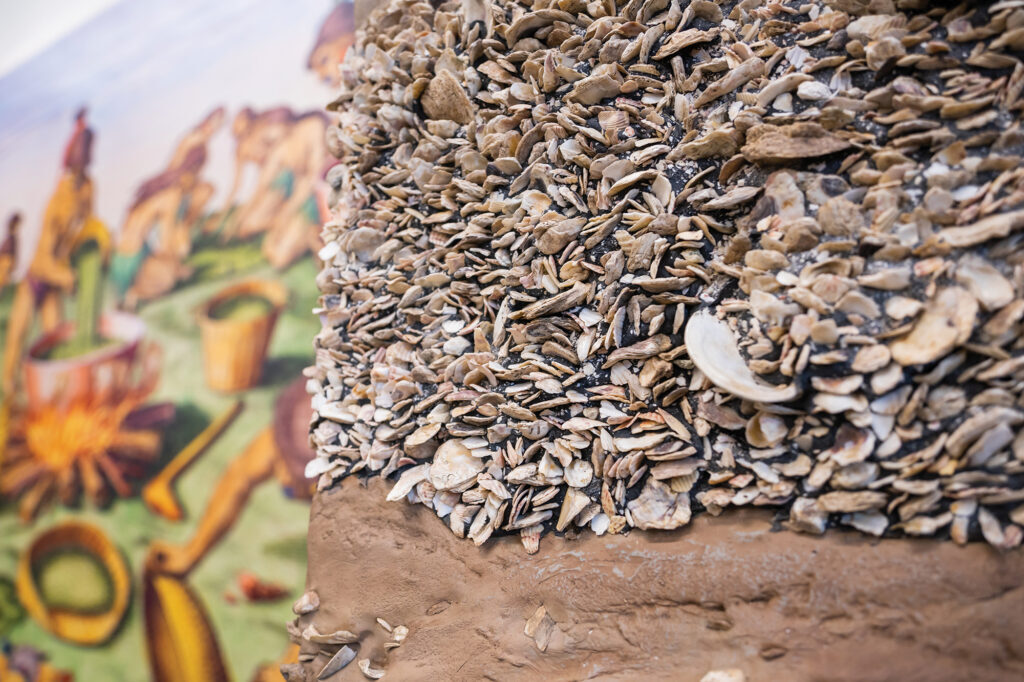
Let’s dig into history—right here on Jekyll Island! We’ll travel back in time to meet the Guale and Timucua, the island’s very first people. Starting from the present, students will dig through layers of sand and dirt to discover special treasures from time long ago. Ready to become time-traveling archaeologists and find cool artifacts?
- K.P.ST II Students develop and apply a multilayered understanding of context, author, audience, and purpose to ground and propel the interpretation and construction of texts.
- K.P.ST.1 Context Develop and apply knowledge of key components of context such as background information, geographic location, cultural influences, time period, and contemporary events when interpreting and constructing texts.
- K.MDR.7 Observe, describe, and compare the physical and measurable attributes of objects and analyze graphical displays of data to answer relevant questions.
- K.GSR.8 Identify, describe, and compare basic shapes encountered in the environment, and form two-dimensional shapes and three-dimensional figures.
- 1.MDR.6 Use appropriate tools to measure, order, and compare intervals of length and time, as well as denominations of money to solve real-life, mathematical problems and analyze graphical displays of data to answer relevant questions.
Suggested Reading: Animal Skeletons, Caring for the Earth, Look at Fossils (430L)
Possible Activities: “Archeological dig,” making fossils
Second Grade Tour
The Other Native Tribes of Georgia
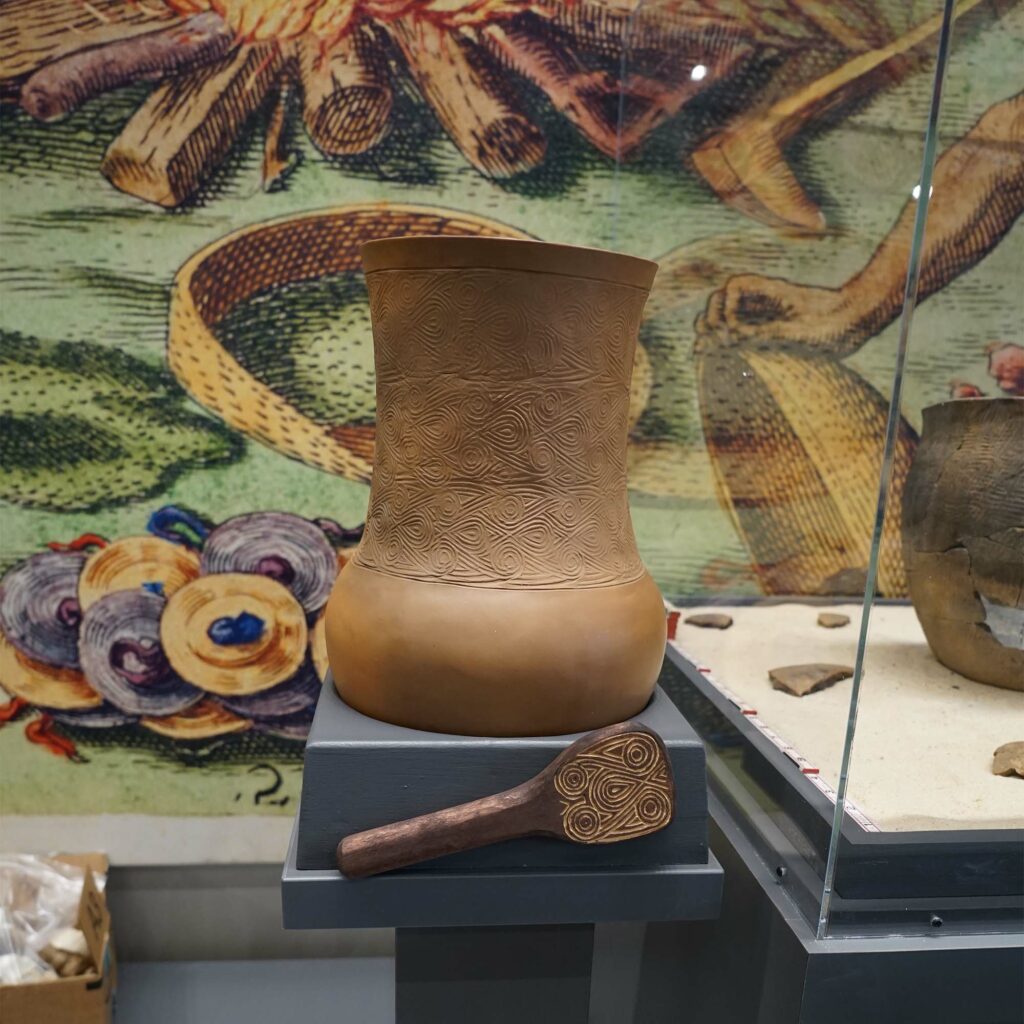
Let’s travel way back—over 4,000 years ago! The Guale and Timucua were the very first people to live on Jekyll Island. They built giant trash piles called middens, made beautiful pottery, and invented clever tools to live and thrive here. Join us as we explore their amazing stories and discover the cool things they created!
- SS2H1 Describe the lives and contributions of historical figures in Georgia history.
- SS2H2 Describe the Georgia Timucua* and Guale* cultures of the past in terms of tools, clothing, homes, ways of making a living, and accomplishments.
- Compare and contrast the Georgia Timucua* and Guale* cultures of the past to those of Georgians today.
- SS2G2 Describe the cultural and geographic systems associated with the historical figures in SS2H1 and Georgia’s Timucua* and Guale* in SS2H2.
- SS2G2 Describe the cultural and geographic systems associated with the historical figures in SS2H1 and Timucua and Guale in SS2H2.
- SS3G3 Describe how physical systems affect human systems.
Suggested Reading: The Timucua Indians-A Native American Detective Story, Explore Native American Cultures, Native American Stories for Kids, The Land of the Guale, Guale Uprising
Possible Activities: Word search, build a model of a home, a canoe, or a midden, and create a storyboard of the Guale and Timucua residence on Jekyll.
*Timucua and Guale were the original inhabitants of Jekyll Island; While the original education standard included lessons on the Creek and Cherokee tribes, they did not inhabit the island.
Third Grade Tour
Plantation Oak: History told through the eyes of a tree.

Get ready to hear history like never before—through the eyes of Plantation Oak! On the tour, this mighty old tree will tell stories about Jekyll Island’s very first people, the Guale and Timucua, and how the British settlers came to live here, too.
- 3.P.ST.1 Context- Develop and apply knowledge of key components of context such as background information, geographic location, cultural influences, time period, and contemporary events when interpreting and constructing texts.
- 3.P.ST.2 Author, Audience, & Purpose-Interpret and construct texts by developing and applying knowledge of the strategies and techniques authors use to accommodate the target audience and achieve the text’s purpose.
- 3.P.AC.3. Text Design- Consider the impact of text design on audience and purpose when consuming and producing texts across modes and genres.
- SS3H1 Describe early American Indian cultures and their development in North America
- SS3H2 Describe European exploration in North America
- SS3H3 Explain the factors that shaped British Colonial America.
Suggested Reading: The Giving Tree, Sweet Tea by the Live Oak Tree, One Acorn’s Journey, Tell Me Tree
Possible Activities: Students will write a poem or short story of one of the various people mentioned in SS3H3 told through the eyes of Plantation Oak.
Fourth Grade Tour
Jean-Marc of Jekyll
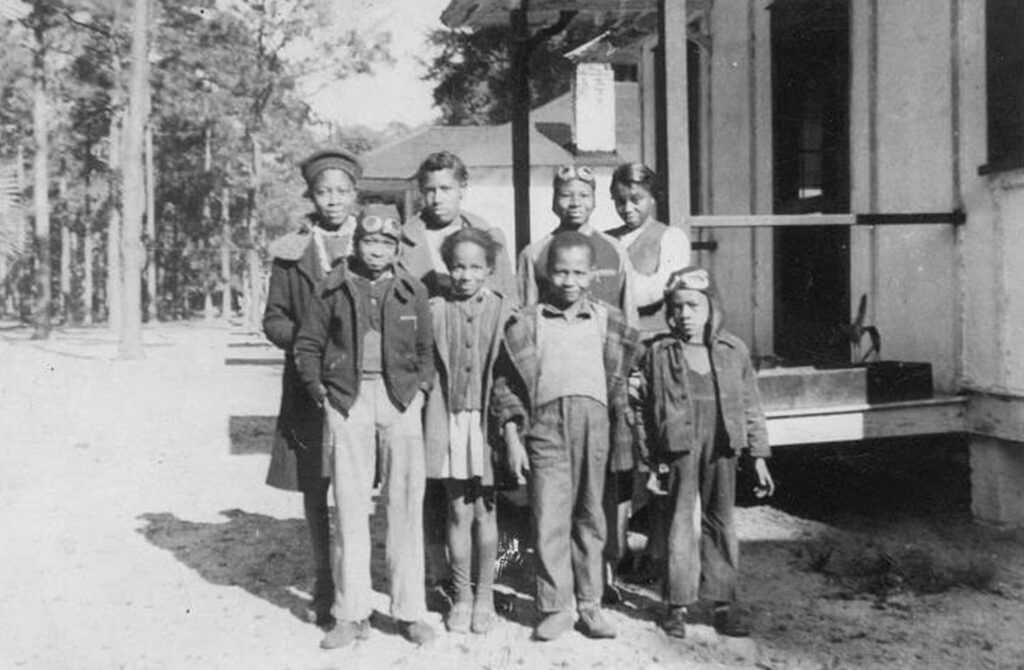
Discover the untold story of Jekyll Island’s transformation after the Civil War. In Jean Marc of Jekyll, follow Jean Marc and his mentor Vandi, a proud Gullah Geechee descendant, as they navigate the powerful changes brought by wealthy Northerners and fight to build a brighter future for the grandchildren of formerly enslaved people along Georgia’s barrier islands. Dive into a story of resilience, hope, and the complex legacy of Reconstruction on the coast.
- 4.P.ST.1 Develop and apply knowledge of key components of context such as background information, geographic location, cultural influences, time period, and contemporary events when interpreting and constructing texts.
- 4.P.AC III Author’s Craft- Students apply knowledge of author’s craft to enhance the interpretation and construction of texts.
- 4.T.RA IV. Research & Analysis- Students use, discuss, analyze, and curate texts as they engage in various conversations, activities, and projects about a range of grade-level texts and topics.
- SS4H5 Explain the causes, major events, and consequences of the Civil War.
- SS4H6 Analyze the effects of Reconstruction on American life.
- SS4E1 Use the basic economic concepts of trade, opportunity cost, specialization, voluntary exchange, productivity, and price incentives to illustrate historical events.
- SS4G1 Locate important physical and man-made features in the United States.
Suggested Reading: Jean-Marc of Jekyll loaned as a class set, Forty Acres and Maybe a Mule
Possible Activities: Students will write a journal entry told through the eyes of either Jean-Marc, Vandi, or Amy. Journal entries will be aged and placed in a book for the class.
Fifth Grade Tour
Building a House with a Bridge? The Hollybourne Cottage
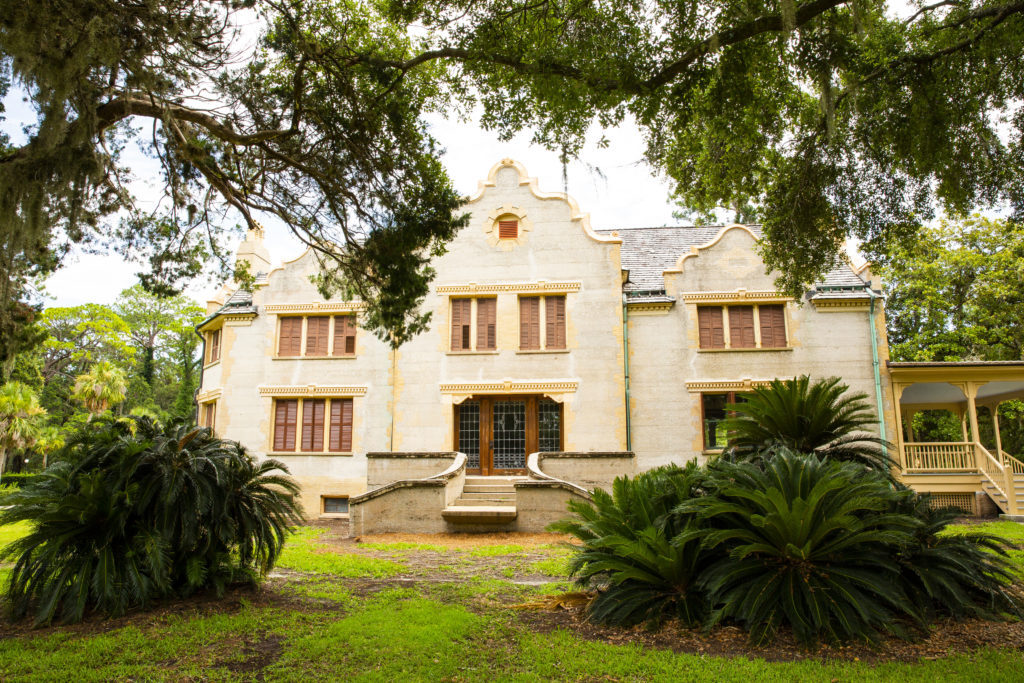
Meet Hollybourne Cottage: The home that breaks all the rules. Built by engineer Charles Stewart Maurice of the Union Bridge Company, this wasn’t just any cottage; it was a marvel of innovation. Using bridge-building techniques, Maurice created one of America’s first “open floor plan” homes, blending engineering genius with architectural style.
- 5.PAR.6 Solve relevant problems by creating and analyzing numerical patterns using the given rule(s).
- 5.MDR.7 Solve problems involving customary measurements, metric measurements, and time and analyze graphical displays of data to answer relevant questions.
- 5.GSR.8 Examine properties of polygons and rectangular prisms, classify polygons by their properties, and discover volume of right rectangular prisms
Possible Activities: Students will tour Hollybourne Cottage and create a bridge using kinetics or marshmallows and toothpicks.
Sixth and Seventh Grade Tour
Kate Brown-A Tour through Her Letters
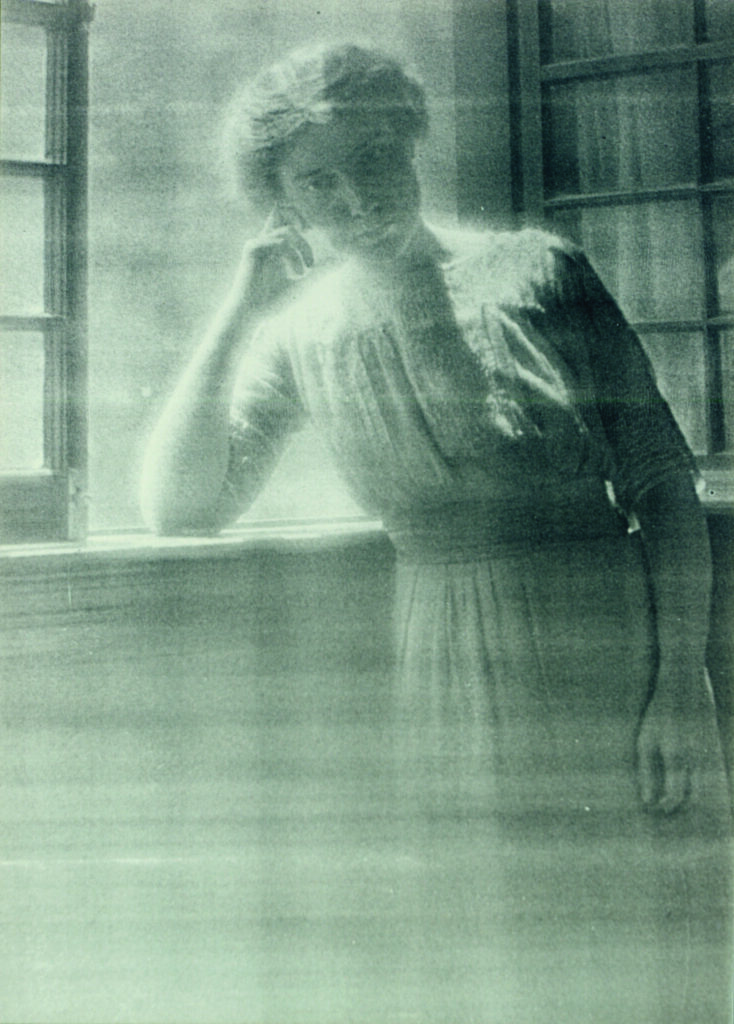
Step into the shoes of Kate Brown, a secretary and tutor to the Macy family, whose letters offer a rare glimpse into the world of America’s wealthiest elite. Students will walk from Moss Cottage to Chichota Cottage and explore the grand estates and secret corners where history unfolded, discovering the real and often tragic lives behind the gilded doors of Jekyll Island’s most powerful families.
- 6.7.L.V II. Vocabulary- Students engage in a wide range of written and spoken activities during which they expand and deepen their vocabularies, build word analysis skillsets (morphology), and determine or clarify the meanings of words and phrases.
- 6.T.C I Context- Students recognize influences on texts and analyze how they shape meaning.
- 6.7.T.SS II Structure & Style- Students analyze and use organizational structures and style to shape ideas and information.
Suggested Reading: It’s a Wonderfully Lovely Place
Possible Activities: Students will write a letter through the eyes of a servant on Jekyll incorporating some of the vocabulary at that time; write a letter to their parents or guardians, describing one of the places visited on the tour; create a story board of one of the activities the millionaires enjoyed (e.g. tennis, Redbug rides, horseback riding, swimming)
Eighth Grade Tour
Before They Were Millionaires

Long before the millionaires arrived, Jekyll Island held secrets of survival, struggle, and history that shaped its shores. From its earliest native inhabitants to the shadows of the Civil War, Jekyll witnessed one of America’s last illegal slave ships anchoring quietly at its southern tip. Uncover the powerful stories that set the stage for Jekyll’s Gilded future.
- SS8H1 Evaluate the impact of European exploration and settlement on American Indians in Georgia.
- SS8H2 Analyze the colonial period of Georgia’s history.
- SS8H5 Analyze the impact of the Civil War on Georgia.
Suggested Reading: The Land of the Guale, Guale Uprising, The Lost Tribes of Florida, The Mayaca and the Timucua
Possible Activities: Make traditional Timucua pottery; create a scaled Timucua village
American Government and Civics Tour
I am Woman, Hear me Roar
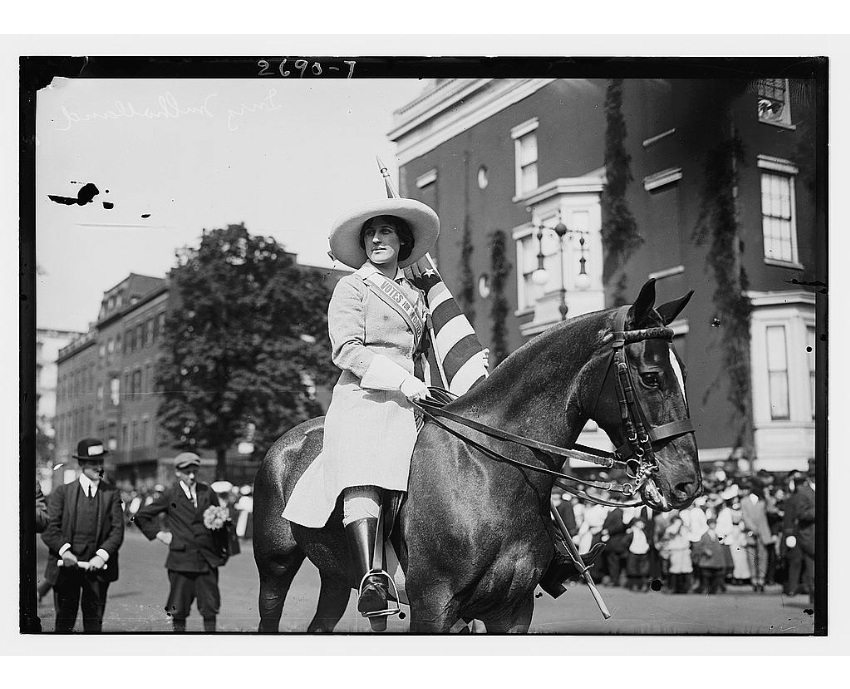
What did freedom look like for women during the Gilded Age, especially on a place like Jekyll Island? On the surface, society expected women to follow strict “traditional” roles, but at the exclusive Jekyll Island Club, women experienced a very different kind of freedom. Students will explore and uncover the surprising stories of women’s roles and rights in two very different worlds.
- SSCG7 Demonstrate knowledge of civil liberties and civil rights.
- L9-10RHSS1: Cite specific textual evidence to support analysis of primary and secondary sources, attending to such features as the date and origin of the information.
- L9-10RHSS6 Compare the point of view of two or more authors for how they treat the same or similar topics, including which details they include and emphasize in their respective accounts.
- L9-10RHSS9 Compare and contrast treatments of the same topic in several primary and secondary sources.
Suggested Reading: 100 Years of Georgia Women Legislators, Women’s Suffrage…, With All Due Respect: Understanding Anti-Suffrage, National Association Opposed to Women’s Suffrage
Possible Activities: Compare and contrast the lives and freedoms of women on Jekyll vs. the rest of society, articulating why women’s suffrage came about; create a political cartoon for pro-suffrage or anti-suffrage; create a political cartoon contrasting the lifestyles of the women on Jekyll versus the lifestyle of the average American woman.
U.S. History and American Literature Tour
Storytelling, Folk Tales, and The Ring Shout of the Gullah Geechee Culture
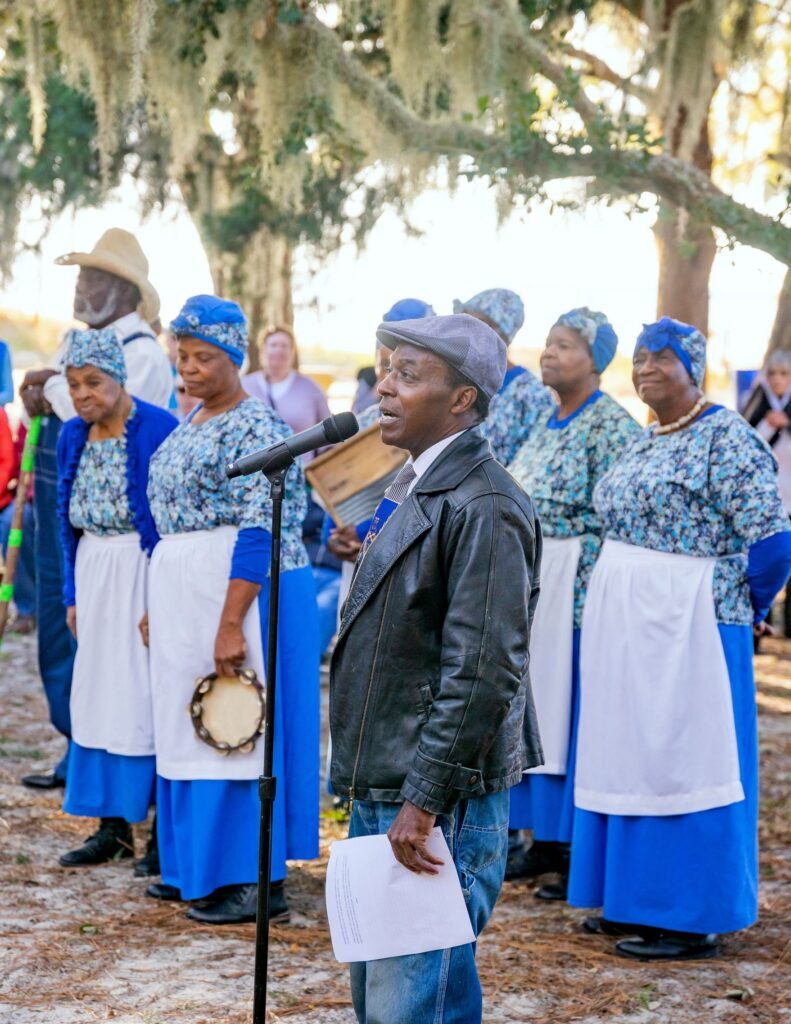
Hidden away on isolated islands, the rich and resilient Gullah Geechee culture has thrived for more than a century—preserved by geography and tradition. Students will uncover their vibrant world through captivating folk tales and powerful real-life stories from the Southeastern Gullah Geechee people. Get ready to step into a living culture that has survived but is in danger of disappearing.
- SSUSH2 Describe the early English colonial society and investigate the development of its governance.
- SSUSH7 Investigate political, economic, and social developments during the Age of Jackson.
- SSUSH8 Explore the relationship between slavery, growing north-south divisions, and westward expansion that led to the outbreak of the Civil War.
- SSUSH10 Identify legal, political, and social dimensions of Reconstruction.
Suggested Reading: Drums and Shadows, Gullah Folktales from the Georgia Coast, West African Folktales
Possible Activities: RAFT; create a song, poem, or story using the Gullah Geechee vernacular.
U.S. History Tours
Jim Crow, Chitlin’ Circuit, Civil Rights, and Jekyll Island

What do rock and roll and Jim Crow have in common? The Chitlin Circuit, a network of Black-owned nightclubs, dance halls, juke joints, and theaters in the South, on the East Coast, and parts of the Midwest. These clubs thrived during segregation, offering a vital stage for Black performers and a cultural haven for Black audiences. Ironically, the Civil Rights Movement’s hard-won victories also led to the decline of this once safe space for African American artists to express themselves freely and creatively.
- SSUSH8 Explore the relationship between slavery, growing north-south divisions, and westward expansion that led to the outbreak of the Civil War.
- SSUSH21 Analyze U.S. international and domestic policies including their influences on technological advancements and social changes during the Kennedy and Johnson administrations.
- SSMGS7 Use a map to explain the impact of geography on historical and current events.
- SSMGS11 Compare maps with data sets (charts, tables, graphs) and /or readings to draw conclusions and make generalizations.
Suggested Reading: Jekyll Island History, Integration’s Celebration
Possible Activities: Create a timeline of the history of rock and roll and align it to a timeline for Civil Rights, while pinpointing specific sites on the Chitlin Circuit; Tour St. Andrews Beach.
Robber Barons to Labor Unions
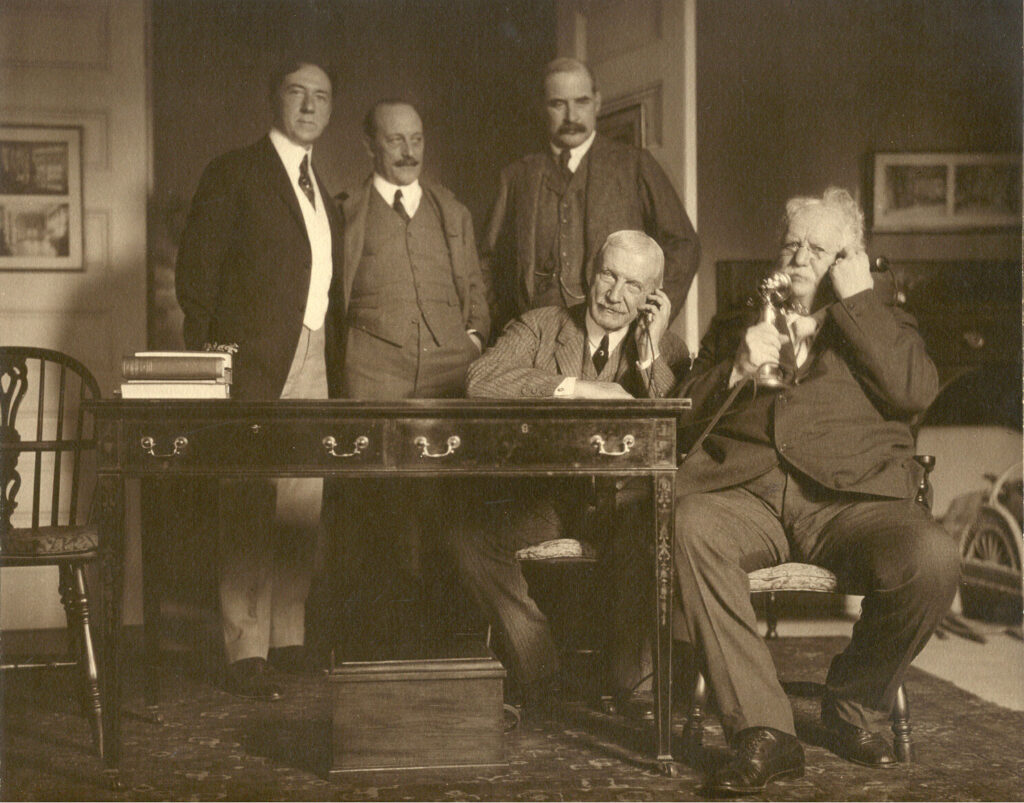
Step back into the smoke-filled factories and marble mansions of the late 1800s — where fortunes were made, lives were risked, and America was transformed. Investigate the rise of big business, explore the pushback from organized labor, and decide: were the Robber Barons ruthless exploiters or captains of industry? Were the labor movements heroic fighters or dangerous radicals?
- SSUSH11 Examine connections between the rise of big business, the growth of labor unions, and technological innovations.
Suggested Reading: A Brief Outline of American Labor History…, Industrial Growth and Big Business, How Robber Barons Flaunted Their Money…, Robber Barons or Captains of Industry
Possible Activity: Create a political cartoon, either pro-labor union or pro monopoly; create a newspaper advertisement for the growth of labor unions; create a gossip column describing one of the Robber Barons lavish parties.
World History Tour
The Wanderer: The Jekyll Island Slave Ship
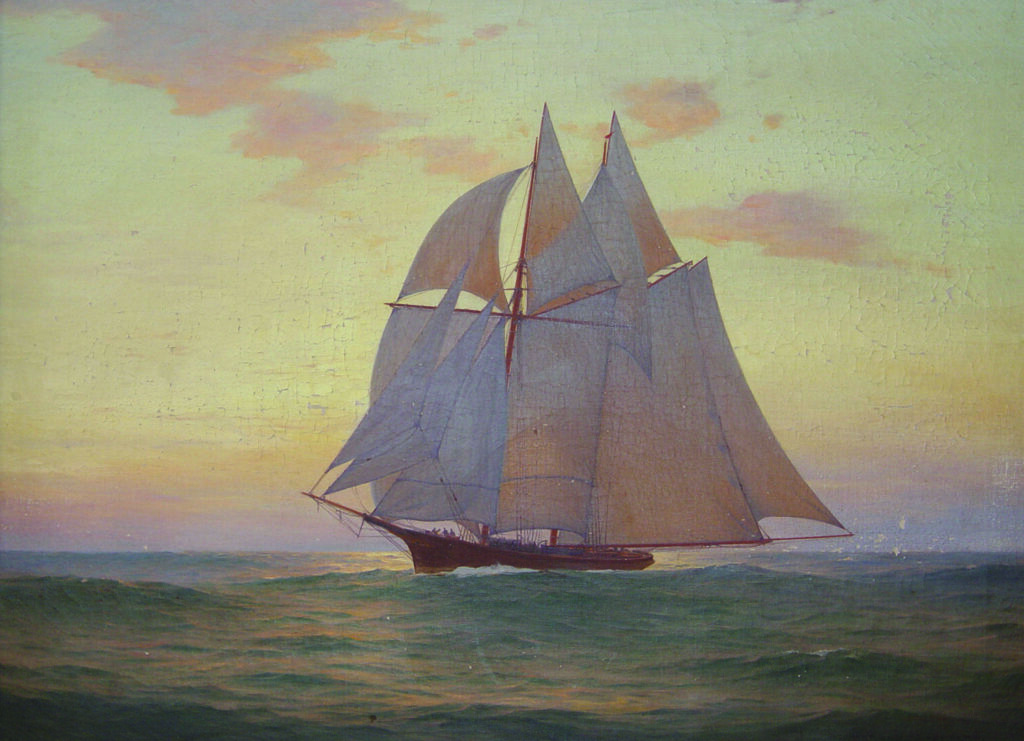
In 1858, The Wanderer anchored off the southern tip of Jekyll Island, smuggling over 400 enslaved Africans—fifty years after the transatlantic slave trade was outlawed. Why Jekyll? The DuBignon family, island owners, played a key role in this illegal operation. Their story and the voices of the enslaved reveal a chilling chapter in the island’s past.
- SSWH10 Analyze the causes and effects of exploration and expansion into the Americas, Africa, and Asia.
- Examine the effects of the Transatlantic Slave Trade on Africa and the colonies in the Americas.
Suggested Reading/Viewing: The Yacht Turned Slave Ship, The Wanderer Film, The Wanderer Memory Trail
Possible Activity: Walking tour of DuBignon Cottage; a self-guided walking tour of the Wanderer Memory Trail; writing journal entries through the eyes of one of the slaves aboard the ship
Architecture Tours
Cottage Construction
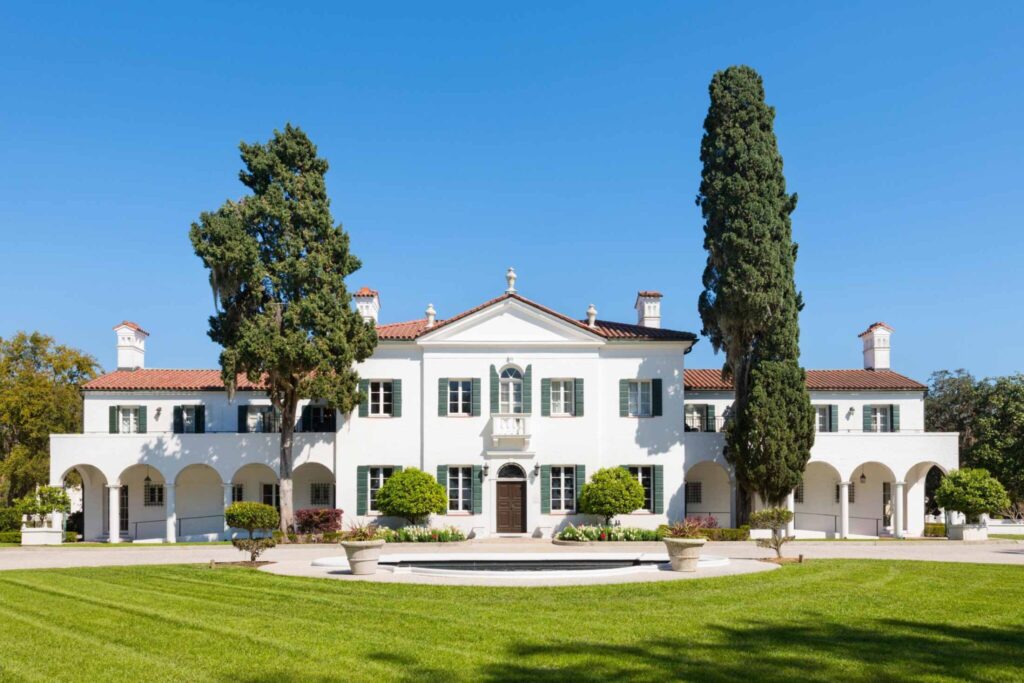
Get ready to step inside the grand cottages of the Jekyll Island Club. Dive into the unique floor plans and compare two of these historic homes, discovering what made each one special. Then discuss how Gilded Age houses stack up against today’s homes and what life was like in Southern homes back then. Uncover the fascinating “rules of the club” that dictated how these cottages were designed and built, revealing the secrets behind their stunning style and function.
- AC-ADDI-2 Identify components related to the architectural design process.
- AC-ADDI-6 Prepare elevations for residential drawings.
- AC-ADDI-5 Research roof systems, styles, and terminology.
- AC-ADDI-8 Demonstrate preparing foundation plans.
- AC-ADDII-6 Create a project presentation for a building.
Suggested Reading: Examining the Bylaws of the Jekyll Island Club, reading letters from Superintendent Grob
Possible Activity: Create a floor plan or an elevation for a cottage of the Gilded Age keeping in mind the rules of the Jekyll Island Club.
Faith Chapel
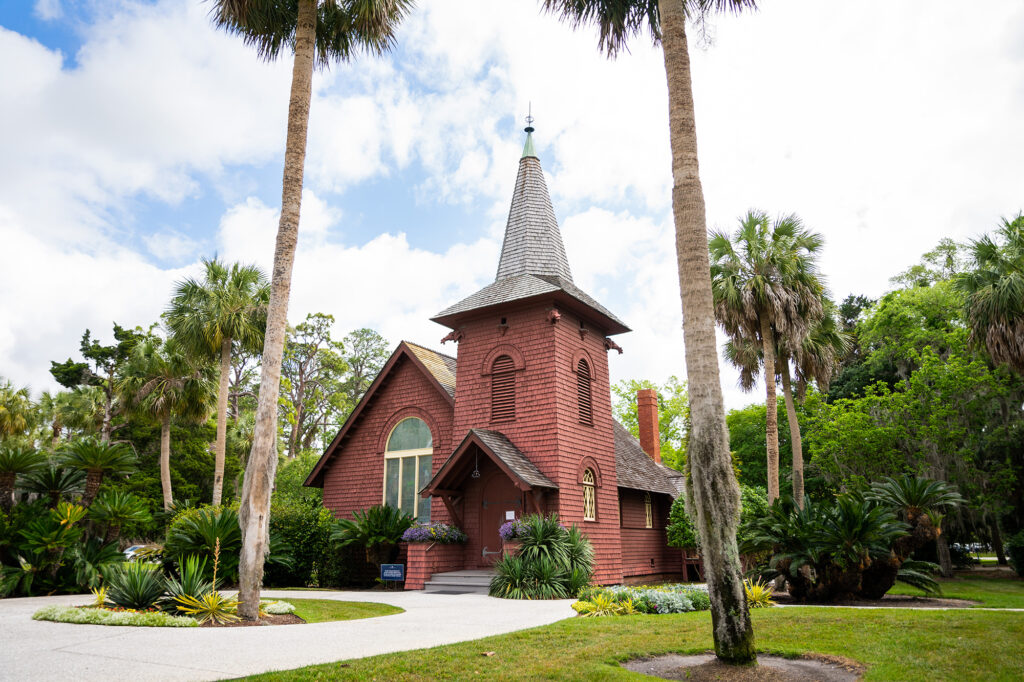
Gothic Revival architecture was all the rage from 1830 to 1860—but Faith Chapel was built in 1904, long after the style had faded from fashion. Why? Students will dive into the key features of Gothic Revival design and explore why the Jekyll Island Club members may have chosen this “outdated” style for Faith Chapel, uncovering the stories and meanings behind their choices.
- AC-ADDI-2.1 Describe the elements and principles of design.
- AC-ADDI-2.2 Research historical architectural styles.
- AC-ADDI-2.4 Analyze building sites.
- AC-ADDI-2.5 Identify and summarize elements of sustainable design.
- AC-ADDI-5.1 Recognize and compile various styles and constructions of roof systems, including hip, gable, mansard, gambrel, shed, and flat.
- AC-ADDI-5.4 Assess aesthetics of roofs.
- AC-ADDI-6.3 Create elevation drawings with labels and dimensions to include roof slope and overhang, type of roofing, door and window location, and porches.
Suggested Reading: Gothic Revival in America, Faith Chapel
Possible Activity: Create a rendering of a Gothic Revival home, church, or building
Culinary Arts Tour
The Decadent Lives of the Rich and Famous on Jekyll
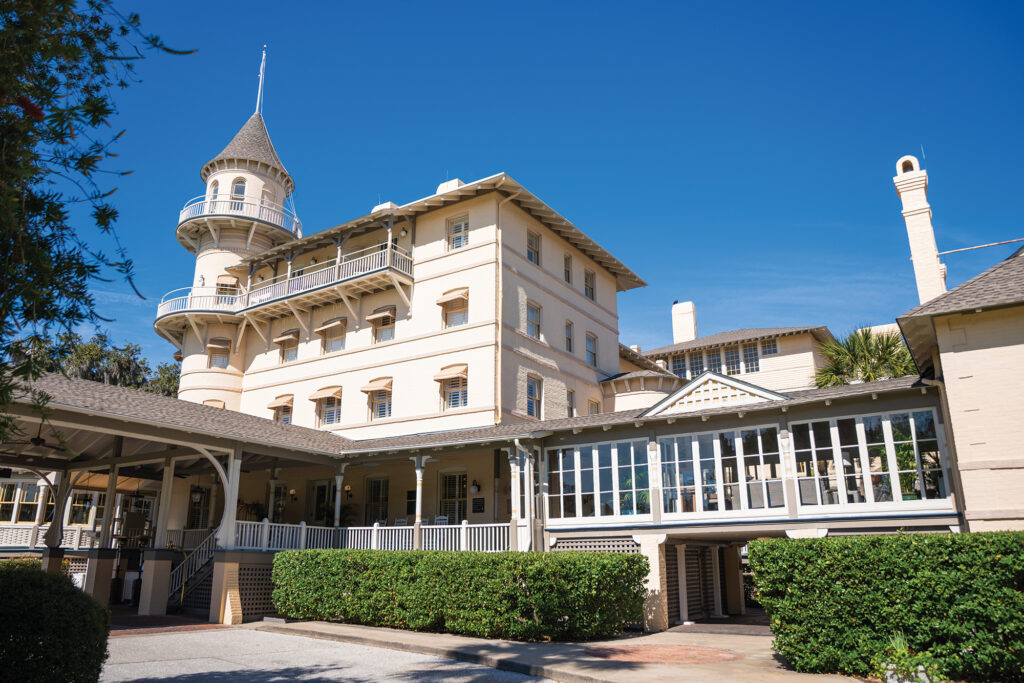
Step into the lavish world of the Gilded Age at The Jekyll Island Club—where America’s wealthiest elite dined, socialized, and indulged in culinary extravagance. On this tour, students will uncover the flavors, recipes, and kitchen secrets behind the elegant banquets that defined an era of opulence and excess.
- HOSPCAII3 Demonstrate competency in the commercial food preparation of all menu categories to produce a variety of food products.
- HOSCAII7 Identify and create a conceptual food-service operation and identify the requirements needed for successful operation management.
Suggested Reading: Extreme Dining, Gilded Age Getdowns
Possible Activities: Tour the three cottages with kitchens and compare and contrast them to today’s modern kitchens; create dishes from the popular meals and recipes of the Gilded Age- lunch, dinner, and high tea
Commercial Fishing & Economics Tour
Shrimping and Economics in Georgia: The History of Shrimping in Georgia
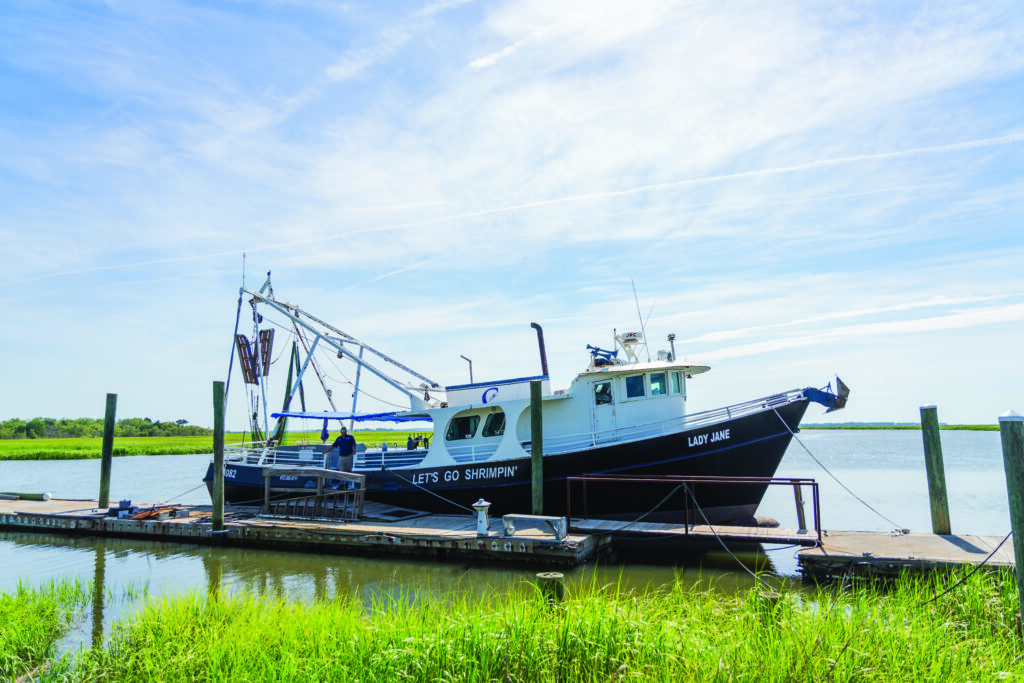
Set sail on a journey through Georgia’s shrimping history. From bustling oyster beds to shrimping hotspots and the vast Atlantic Ocean, discover how shrimping shaped the coastal economy and the lives of those who make their living from the sea. Ready to explore where the shrimp come from and why they matter?
- AFNR-CFMFS-3 Describe and discuss the history, types of fish, and modern practices in the commercial fishing industry.
- AFNR-CFMFS-6 Obtain, evaluate, and communicate information on the physical and chemical properties of seawater and how they influence the structure of the ocean.
- AFNR-CFMFS-11 Research and interpret information regarding the biological and life history of southeast Atlantic Ocean commercial fishing species.
- AFNR-CFMFS-12 Obtain, evaluate, and communicate information on how waves and tides are created and their influence on coastal processes.
- SSEF1 Explain why limited productive resources and unlimited wants result in scarcity, opportunity costs, and tradeoffs for individuals, businesses, and governments.
- SSEF2 Give examples of how rational decision-making entails comparing the marginal benefits and the marginal costs of an action.
- SSEF3 Explain how specialization and voluntary exchange influence buyers and sellers.
- SSEF4 Compare and contrast different economic systems and explain how they answer the three basic economic questions of what to produce, how to produce, and for whom to produce.
Suggested Reading: Shrimping in Coastal Georgia, A Century of Fishing
Possible Activities: Discuss present day proposed tariffs and their impact on the shrimping industry in Georgia.
Chemistry Tour
Tiffany Glass: Where Art, Light, and Chemistry Illuminate History
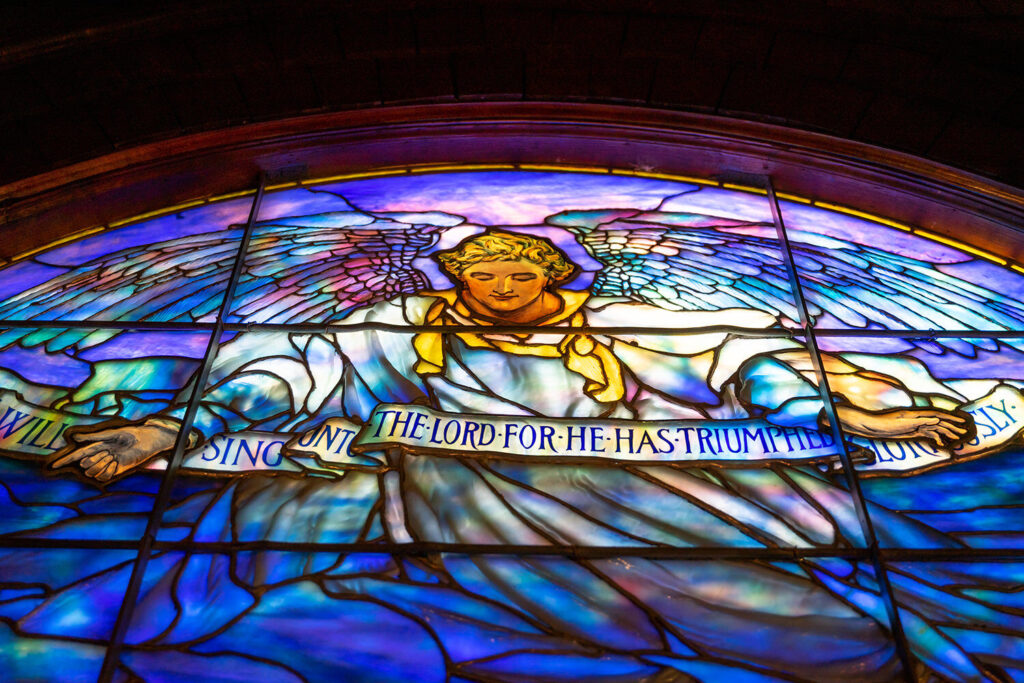
Step into Faith Chapel and see art and science collide. Explore Tiffany’s dazzling Favrile glass window while uncovering the chemistry behind its glowing colors. Discover how metal oxides, heat, and light created one of the Gilded Age’s most stunning masterpieces.
- SC3 Obtain, evaluate, and communicate information about how the Law of Conservation of Matter is used to determine chemical composition in compounds and chemical reactions.
- SC4 Obtain, evaluate, and communicate information about how to refine the design of a chemical system by applying engineering principles to manipulate the factors that affect a chemical reaction.
Economics Tour
Economics of Jekyll pre and post WWI-Enrichment
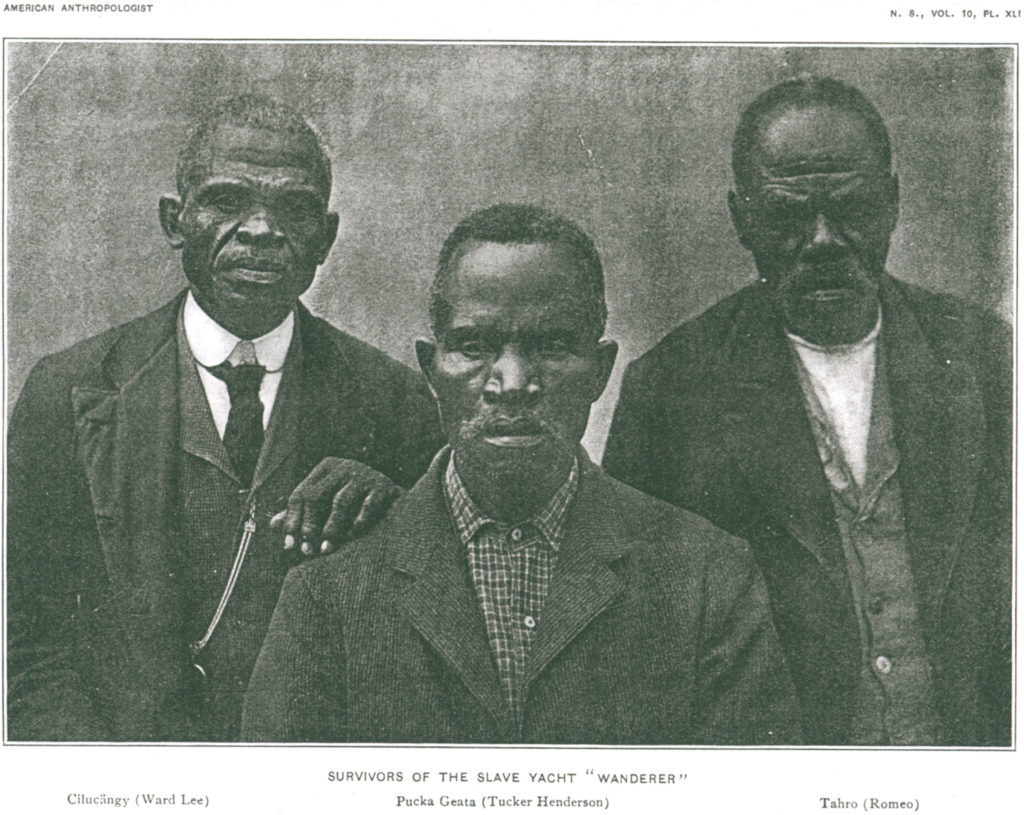
How could people believe it was right to own another human being? To understand that mindset, one must step into the world of Southern slave owners—where economics, culture, and twisted justifications collided to create a harsh reality. Students will explore the beliefs, fears, and arguments that made slavery not only accepted, but also defended as ‘just’ by many in the South.
- SSEF1 Explain why limited productive resources and unlimited wants result in scarcity, opportunity costs, and tradeoffs for individuals, businesses, and governments.
- SSEF2 Give examples of how rational decision-making entails comparing the marginal benefits and the marginal costs of an action.
- SSEF3 Explain how specialization and voluntary exchange influence buyers and sellers.
- SSEF4 Compare and contrast different economic systems and explain how they answer the three basic economic questions of what to produce, how to produce, and for whom to produce.
Suggested Reading: How Slavery Became the Economic Engine of the South, The Slave Economy, The Water and the Blood
Possible Activity: Compare and contrast plantations pre-and post-Civil War; engage in a Socratic Seminar discussing the moral and financial issues surrounding slavery.